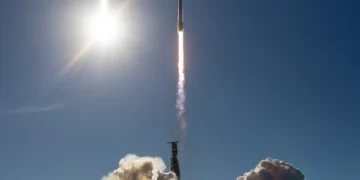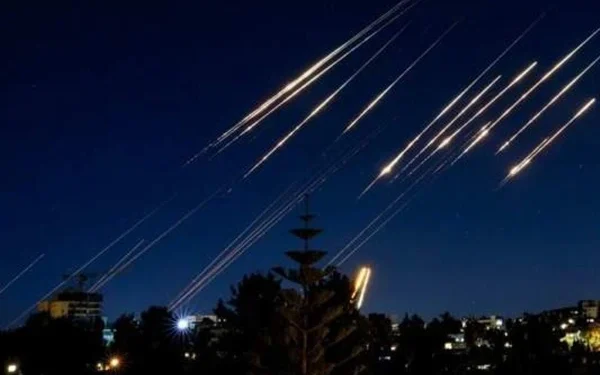In a significant development shedding light on the intensity and strategic dimensions of the recent Iran-Israel war, newly revealed radar data confirms that Iran directly targeted five major Israeli military installations during the 12-day conflict that erupted on June 13, 2025. This disclosure comes as international analysts begin to assess the full scope of the unprecedented escalation between the two arch-rivals, with key findings now being analyzed by military experts and geopolitical observers.
The radar findings, initially reported by the British media and corroborated by analysts from Oregon State University, suggest a highly coordinated Iranian missile campaign that reached deep into Israel’s military infrastructure, spanning the north, south, and central regions of the country.
📡 Radar Analysis Unveils Key Targets
The Anadolu News Agency, citing radar data examined in a collaborative study by international experts, reported that six Iranian missiles launched from Tehran penetrated Israeli airspace and hit critical military installations. These included:
- An Air Force Base in southern Israel
- A Military Intelligence Facility in central Israel
- A Logistics and Munitions Storage Center
- Two undisclosed radar and command centers in the northern and central regions
Although Israeli officials declined to confirm or deny the precise damage or disclose the nature of the sites targeted, these were reportedly high-value strategic locations essential to the operational readiness of the Israeli military.
🔒 Censorship of Damage Details by Israeli Government
Despite growing global curiosity and media scrutiny, the Israeli government has maintained tight censorship regarding the extent of damage caused by Iranian missile strikes. Military analysts believe that this censorship serves multiple purposes:
- Preventing public panic within Israel
- Preserving operational security
- Avoiding pressure from opposition parties or international allies
A British intelligence report confirmed that 16% of Iranian missiles successfully penetrated Israel’s air defense network, a statistic that aligns with the 87% interception rate earlier claimed by the Israel Defense Forces (IDF). This highlights that while Israel’s Iron Dome and David’s Sling systems were largely effective, a small but significant number of projectiles still reached their targets.
🇮🇷 Iran’s Strategic Response to Israeli Aggression
The conflict originated on June 13, 2025, when Israel launched airstrikes targeting Iranian nuclear and civilian infrastructure, including scientific research centers and urban areas. The offensive was widely condemned by several regional powers and sparked fears of a broader regional war.
In response, Iran launched a series of counterattacks, relying on ballistic missiles and drone swarms. According to the Iranian Health Ministry, the initial Israeli assault resulted in 935 Iranian fatalities, including both military personnel and civilians. Additionally, over 5,300 civilians were injured, marking one of the deadliest Israeli strikes on Iranian soil in recent years.
⚔️ Iranian Retaliation: Tactical Precision and Symbolic Impact
Iran’s counterstrikes were tactical and symbolic, aiming to convey both military capability and political defiance. By targeting major Israeli defense facilities, Tehran demonstrated that it possessed both intelligence capacity and technological precision to retaliate beyond mere rhetoric.
According to Israeli sources, Iran’s retaliatory strikes led to:
- 29 Israeli deaths, primarily military personnel
- More than 3,400 injuries, including civilians caught in secondary explosions or missile fragments
- Temporary disruption of military communication networks and supply chains in affected regions
Observers believe that the Iranian attacks aimed not only to retaliate but also to deter future Israeli offensives, especially targeting Iranian nuclear ambitions.
🛰️ Role of Air Defense Systems and Global Technology
One of the key takeaways from this conflict is the performance of modern air defense systems. Israel deployed a multi-layered missile defense system that included:
- Iron Dome – to intercept short-range missiles
- David’s Sling – for medium-range threats
- Arrow-3 and Arrow-4 systems – to intercept long-range ballistic missiles
Despite these systems’ reported effectiveness, the 16% success rate of Iranian missiles raises questions about vulnerabilities in Israel’s otherwise robust defense network. Military experts say the Iranian use of hypersonic glide vehicles and swarm drones may have been critical in breaching Israeli radar coverage.
⚠️ Civilian and Humanitarian Toll on Both Sides
The humanitarian toll of the war has reignited calls from international human rights groups to protect civilian populations from becoming collateral damage in state conflicts. The following losses were recorded:
In Iran:
- 935 martyred, as reported by Iran’s Health Ministry
- 5,332 injured civilians, with many suffering from burns, shrapnel wounds, and building collapses
- Multiple nuclear research centers and hospitals were also hit, causing prolonged service disruption
In Israel:
- 29 killed, primarily military personnel but also including civilians near military sites
- 3,400+ injured, especially in Haifa, Beersheba, and areas near Tel Aviv
- Civilian panic and disruption to public transport and healthcare systems in affected areas
🗺️ Geopolitical Implications and Regional Dynamics
The 12-day conflict has already had far-reaching geopolitical implications, pulling other regional actors into a state of heightened alert:
- Hezbollah in Lebanon and Houthi rebels in Yemen expressed solidarity with Iran, triggering smaller rocket exchanges near Israeli borders.
- The United States called for restraint but reaffirmed its support for Israel, while also urging backchannel diplomacy.
- Russia and China criticized Israeli aggression and called for an emergency UN Security Council session to de-escalate the situation.
Furthermore, military cooperation between Iran and Russia, particularly in drone technology and cyber warfare, has come under international scrutiny, with intelligence agencies tracking joint missile development programs.
💬 Expert Opinions and Strategic Assessments
Military analyst Dr. Emily Krauss, affiliated with the Middle East Institute, noted:
“The fact that Iran could strike five strategic installations with precision and partially bypass Israeli air defense is a game-changer in the military balance of the region. It signals that Tehran is no longer content with proxy warfare alone.”
On the other hand, Israeli security expert Amos Yadlin stated:
“Despite Iranian efforts, Israel’s defense shield largely held. The real question now is: how long until the next exchange — and will diplomacy step in before further escalation?”
🔚 Conclusion: A Fragile Ceasefire, But Tensions Persist
While the immediate hostilities between Iran and Israel have subsided following international mediation and backdoor diplomacy, the situation remains volatile and unpredictable. The radar data revealing direct Iranian strikes on Israeli military installations highlights the evolution of regional warfare — from covert operations and proxy battles to direct state-on-state confrontation using advanced missile systems.
With both nations still posturing for strategic advantage and global powers watching closely, it is clear that the Iran-Israel conflict has entered a dangerous new phase, one that could redraw security doctrines in the Middle East and beyond.

























